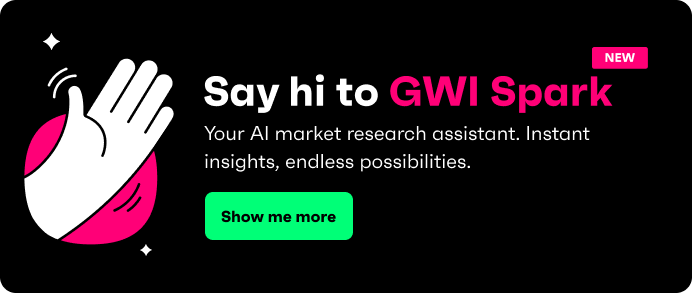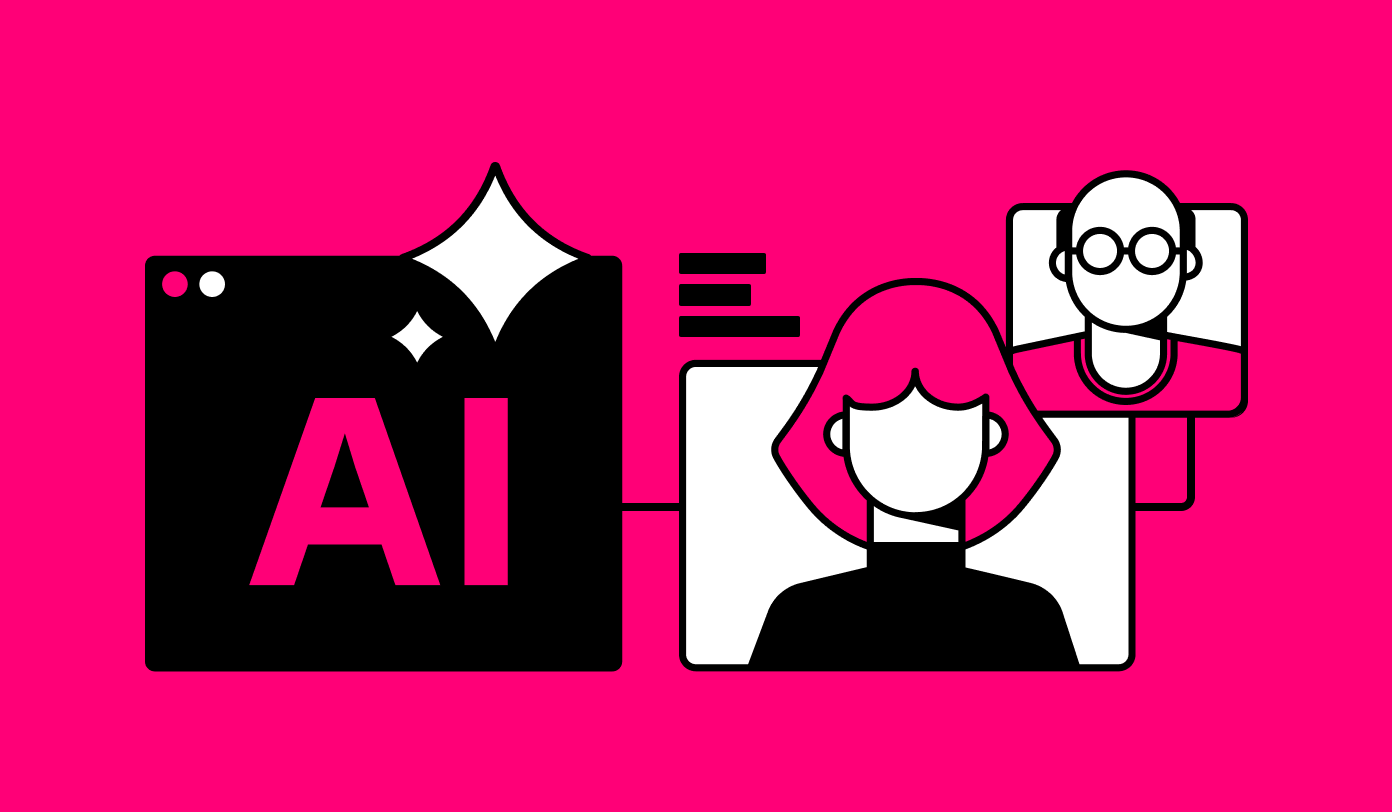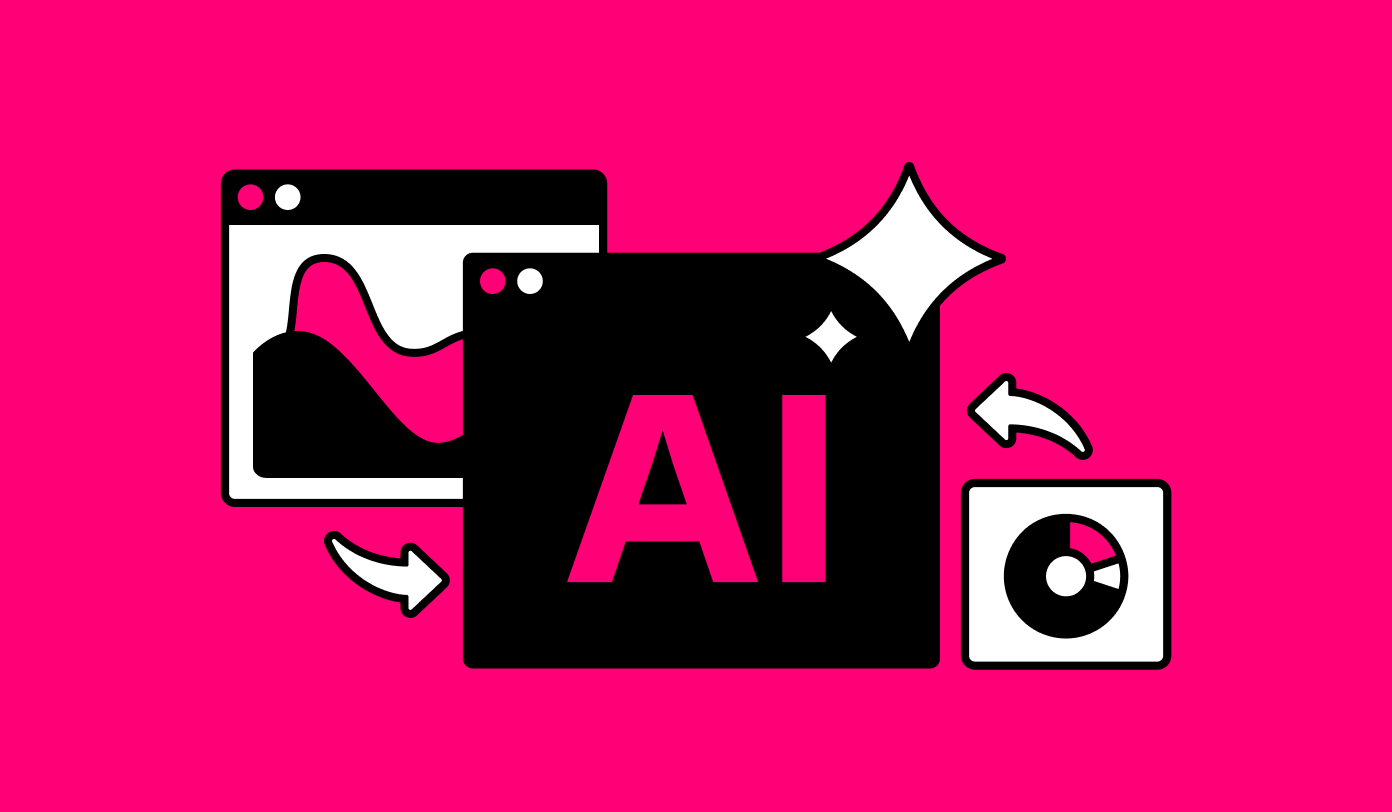
What’s more satisfying than coming up with a game-changing idea? The buzz of that ‘aha’ moment where you can solve a tricky consumer problem is a great feeling. But taking that feeling and turning it into a tangible product? That’s where the work can get very, very difficult.
Today’s markets are powered by people who expect more from the products they choose - so capturing the idea and launching something new means being both bold and smart.
When we talk about the product development process, we’re talking about a structured framework businesses use to turn ideas into real, user-ready products. Good process blends creativity with validation, helping your cross-functional teams move with confidence, agree on what matters, and deliver something that your customers truly want and need.
Settle in as we discuss how to turn ambiguity into clarity, and ideas into action.
Why product development matters
When a product flops, it’s very unlikely it was because those working on it didn’t put the hours (and blood, sweat and tears) in. Often, it’s because the process to get to launch wasn’t built to catch what mattered.
Putting a strong product development process in place is the bedrock of a good launch. It will help de-risk decisions, shorten the time-to-market, and connect your product with the right people. When you have product, marketing, research, and strategy teams all working from a shared playbook grounded in real insight, the odds of success go up.
The product development process
As ever, there’s no one-size-fits-all product journey, but there are some key stages that help keep things focused. Here’s how a successful audience-first process would unfold.
Stage 1: Idea generation
Ah, brainstorming. Whether you rely on whiteboards, mind mapping or even over a Zoom, we can spend far too much time desperately trying to reach that one golden idea. But the best ideas don’t always start in a brainstorm. They can often come from actually listening to what customers want, spotting gaps in the market, and responding to wider cultural shifts.
But there’s a risk: relying too much on gut instinct. That’s where tools like GWI Spark come in. It’s a fast, AI-powered way to tap into behavior shifts, cultural signals, and emerging needs before they go mainstream. Whether you’re refining an existing idea or building something brand new, starting with data gives your thinking a head start, no whiteboards needed.
Stage 2: Research and planning
Once you’ve got the idea, it’s time to put it under the metaphorical microscope.
This stage is all about validation. Segmentation, TAM (total addressable market) sizing, and understanding demand all comes into play, with assumptions getting tested and real audience insight taking center stage. GWI Spark makes this easy by surfacing attitudinal trends and profiling your audience in depth. With the right intel, planning doesn’t just get easier, it gets smarter.
Stage 3: Product prototyping
This is where strategy really starts taking shape. Prototypes and MVPs help translate ideas into something tangible, kicking off early feedback loops before a single line of code is final.
It’s also where tensions can rise. Teams often feel the pressure of getting it right, worrying about wasted time, or outcomes going sideways. Tools like GWI Spark are invaluable in this phase by showing how early designs stack up against audience values and expectations. That way, you’re not just building quickly, you’re building with purpose.
Stage 4: Product testing
Next up it’s stress-testing time, and insight is critical at this point.
Usability, naming, positioning…this is where you figure out what’s clicking and what’s confusing. Testing not only shines a spotlight on what needs refining before launch, it’s also a chance to double down on what’s resonating. With GWI Spark, teams can track sentiment and spot where messaging or features might need a tweak before going into build.
Stage 5: Product creation
Speaking of which - the testing’s all done, and we’re into build mode.
Whether you’re using agile sprints or you prefer a waterfall model, collaboration across the organization is key. This is where product, engineering, design, and research need to stay in sync. By keeping information democratized throughout the build, teams can stay aligned and spot potential issues before they become blockers. Although sometimes testing in its own way, feedback from within your own business is crucial.
Stage 6: Go-To-Market strategy and launch
It’s launch time, and the stakes are high.
This phase is all about timing, positioning, and execution. Whether you’re doing a soft rollout or going all in with an omnichannel push, every detail counts. There’s excitement, sure, but probably served with a hefty side of uncertainty. That’s where data can steady the ship. Use GWI to track the first reactions coming in, spot adoption signals, and measure brand lift in real time. With the right plan, you’ll be going to market with confidence and clarity.
Product development with GWI
GWI doesn’t just support one stage of the process. It’s a true partner across the full product lifecycle, from that first glimmer of an idea, to validation, iteration, and post-launch evaluation.
Product expansion and brand partnerships are integral to new product development (NPD). They’re strategies that diversify your business, strengthen your identity, and create new growth opportunities, especially when you’ve got the data on hand to back them up.
If you want to expand your existing product suite, break into unexplored markets, or connect with new consumers, this next section shows you how.
Product expansion: A step-by-step guide with GWI
- Define and create your target audience
Let’s say you’re a high-value consumer tech brand considering launching a new version of your main product at a lower price point.
The first step is defining and creating your audience. For this example, we’re looking at smartphone users, but to get a really clear view you can be more specific and only include consumers who say their mobile is their most important and most utilized device.
This will help you identify the people who feel their smartphone is an important and considered purchase. - Build and explore charts
Next, you’ll want to build a chart to dive deeper into the details. After applying your saved audience, you can explore the income segmentation tab to see where your audience sits across high, low, or medium earners.
This will help you decide if a lower value product is relevant to your target group.
Based on the chart above, you can see that around 65% of your audience are either middle or low earners, which validates your idea that a cheaper version of your smartphone might be a good fit given their lower disposable income. - Make data-led decisions
You can go even deeper by exploring more charts around attitudes, lifestyles and purchase behaviors to really drive your point home and uncover more insights to bolster your strategy.
Case study: How Sony uses GWI in product development
When Sony Hong Kong wanted to create and roll out Korean TV drama content in the US, the team turned to GWI to get tailored answers straight from the consumers they were targeting.
Because Korean drama content hasn’t historically aired on national linear US television, there was no traditional hard data on their target audience, what they were watching, or how much they were watching.
To overcome this challenge, Sony ran a custom GWI survey and not only discovered interesting audience profiles, but also uncovered deeper insights - like why American consumers watch Korean dramas in the first place, how they want to consume them, and what viewers value most.
The team was able to back up their hypothesis that they should be producing more Korean dramas to export outside of Asia, using GWI’s data to point their strategy in the right direction.
Why having a product development framework matters
It may sound like a misnomer, but creativity is protected by structure.
According to Harvard Business School, 95% of new products fail. That’s a staggering number, and one that rarely comes down to effort alone. The difference between a launch that sticks and one that sinks is often tied to process. A product development framework helps teams stay on track, think ahead, and course-correct with confidence. When strategy and creativity meet strong audience insight, success becomes far more reachable.
How big brands are nailing their product development process
A brand partnership can be a really effective way to build a product that works for many different segments, boosting sales, improving brand recognition, and increasing credibility.
With the insights behind you, you’ve more room to be creative, daring, and different.
Hermès and Apple Watch
A recent collaboration win saw tech meet luxury, with The Apple Watch/Hermès partnership as a great example of strategic co-branding. The two companies took what worked for them individually, combining the power of their reputation and high quality products to create a co-branded product that stays true to Hermès’ equestrian roots.
It may seem like an odd choice for a French luxury goods brand to team up with a technology company, but there’s data to back up this decision. Clothing buyers in the US say they’re 25% more likely than the average consumer to have shopped at an Apple store in the last three months.
Balenciaga and Bang & Olufsen
A legacy fashion house teaming up with a high-end consumer electronics company may seem like another unlikely pair, but what they released became even more headlines-worthy. The brands came together to design a limited-edition speaker purse - and to take it up another notch, only 20 of the bags were released, and could only be purchased exclusively at the new Balenciaga Couture store in Paris.
Sounds crazy, but it worked. Luxury buyers have their eyes set on the latest tech and they’re 45% more likely than the average consumer to say they buy new tech products as soon as they’re available, with smart home products in particular taking their fancy.
Fendi
Fendi is into coffee. Really into it. First the Italian luxury fashion house opened a pop-up cafe in Harrods in 2020, and now they’ve brewed up two fashionable coffee carriers for their Spring/Summer 2024 menswear collection. High-end beverage caddies and coffee shop takeovers might seem like a bizarre business move, but they’re right on the money.
Luxury clothing buyers stand out for visiting coffee shops monthly. In the UK they’re 28% more likely than average to say they’ve visited Caffè Nero and 18% more likely to have visited Costa Coffee.
Final takeaways
The best products don’t just emerge. They’re shaped by process.
From ideation to launch, every step in the product development journey helps you refine, validate, and bring something meaningful to market. Whether you’re in product, strategy, or marketing, one thing holds true. Better insight leads to better outcomes. If you’re ready to explore how GWI can power your next product strategy, now’s the time to dig in.
FAQs about product development
What are the stages of product development?
There are six key stages: idea generation, research and planning, prototyping, testing, product creation, and go-to-market strategy and launch.
How do I create a go-to-market strategy for a new product?
Start by understanding your audience, refining your message, picking the right channels, and choosing the right time to launch. Use real-time data to adapt and refine as you go.
What tools help with developing a new product?
GWI Spark is a powerful insight tool that helps at every stage, from identifying market gaps to validating concepts, shaping messaging, and tracking performance post-launch




.webp?width=495&height=317&name=pink_thumb_graphs%20(1).webp)
.webp?width=495&height=317&name=pink_thumb_letter%20(2).webp)